Understanding the Difference Between Backpacking and Hiking A guide for new adventurers
Many newcomers to outdoor activities find the terms ‘hiking’ and ‘backpacking’ confusing, as they are often used interchangeably. I once took a friend on their first outdoor adventure, and they packed way too much gear—everything from a tent to a full set of cooking gear—because they followed a backpacking checklist instead of a simple hiking essentials list. As a result, what should have been an enjoyable day on the trail turned into a strenuous trek, and they were completely exhausted by the end.
At the end of the day it was a small mistake that we all laugh about now. However, it was our fault for not helping our friend more. As a couple with over 20 years of hiking together, it’s easy to take a lot of the stuff we have learned for granted. That’s why we started this blog, and why we are writing this post. Hopefully it will help you to avoid a similar mistake. In this guide will break down the distinctions between backpacking and hiking, covering essential gear, physical and mental demands, and what to expect from each experience.

Note: This article focuses on the American perspective of outdoor recreation. In other parts of the world, the term “backpacking” often refers to budget travel between cities, rather than wilderness camping. In Europe, for example, backpacking typically involves traveling between destinations using public transportation, staying in hostels, and exploring new cultures with a lightweight pack. If you’re interested in learning more about long-term travel and budget backpacking, check out Vagabonding: An Uncommon Guide to the Art of Long-Term World Travel by Rolf Potts. It will change your outlook on everything.
Key Takeaways
- Hiking: Short single-day trips involve short walks on trails with basic supplies.
- Backpacking: Multi-day excursions require carrying everything needed for food and shelter.
- The main difference between these experiences is the duration, level of preparation, and self-sufficiency required.
- Both activities offer a unique way to connect with nature—hiking allows for a more relaxed, immersive experience in natural settings with minimal gear, while backpacking fosters a deeper appreciation for self-sufficiency and survival skills as you navigate and adapt to the wilderness over multiple days.
Hiking: Short Walks Outdoors

The Hikers Companion for Beginners: Essential Tips and Tricks for Hiking with Confidence In this new guidebook to hiking for beginners, everything you may want to know about the ins and outs of hiking is laid out for you – so you can embark on your hiking adventure without fear.
Hiking is simply the act of walking in natural environments, typically along designated trails in forests, mountains, and parks. It allows individuals to engage with nature while enjoying physical exercise at their own pace. For beginners, look for easy trails in your local area that offer gradual inclines and well-maintained paths. We use the website AllTrails.com to find trails and read reviews from fellow hikers before we set out, ensuring a suitable match for our skill level.
Hiking is an ideal activity for adventurers of all skill levels, offering fresh air, scenic views, and the opportunity to explore different terrains without requiring extensive gear or preparation. It provides a great way to relieve stress, improve cardiovascular health, and build endurance while connecting with nature. We strongly recommend new hikers stick to popular and well-established trails until they get more experience.
Tips for beginner hikers
- Choose the Right Time of Day: Avoid starting hikes during peak heat hours, especially in summer. Early mornings or late afternoons provide cooler temperatures and better lighting for scenery.
- Wear the Right Socks: Invest in moisture-wicking, anti-blister socks instead of just focusing on footwear. Socks play a crucial role in keeping feet dry and preventing painful blisters.
- Test Your Gear at Home: Before heading out, wear your gear around the house or on short walks to ensure comfort and proper fit, especially backpacks and shoes.
- Use the 10-Minute Rule: Start slow—hike for 10 minutes and assess your breathing and energy levels. Adjust your pace accordingly to prevent burnout early on.
- Learn Basic Trail Markings: Many trails use a system of blazes or symbols to mark paths. Familiarizing yourself with these will help you avoid getting lost.
Essential gear for short trips
- Comfortable walking shoes that are appropriate for the terrain.
- Water (How to Keep Water Cold on the Trail)
- Small first-aid kit (DIY First Aid Kit for Outdoor Adventures)
- Snacks (Choosing the Best Trail Snacks)
For most short outings, this basic equipment is all you need.
Backpacking: Extended Wilderness Trips

How to Suffer Outside: A Beginner’s Guide to Hiking and Backpacking Diana Helmuth offers real advice, opinionated but accessible and based on in-the-field experiences. She wins readers’ hearts and trust through a blend of self-deprecating humor and good-natured heckling of both seasoned backpackers and urbanites who romanticize being outdoorsy,
A multi-day outdoor adventure that involves carrying all necessary supplies, including food, water, shelter, and safety equipment. Unlike short hikes, these extended journeys require greater preparation and endurance, offering a deeper connection with nature.
One of the key benefits of these trips is the opportunity to develop valuable outdoor skills such as navigation, fire-building, and wildlife awareness. Travelers learn to read maps, use a compass effectively, and adapt to changing environments, enhancing both physical and mental resilience.
The challenges of carrying a loaded pack over rugged terrain build endurance and problem-solving abilities, making each trip not only a journey through nature but also a test of self-reliance and adaptability.

Beginner Tips
- Master Your Packing System: Organize your backpack with frequently needed items easily accessible. Practice packing and unpacking at home to streamline your routine on the trail.
- Hydration Strategy: Instead of just carrying water bottles, use a hydration bladder for easy sipping while walking. Additionally, know where natural water sources are along your route and bring a reliable water filtration method.
- Layering for Temperature Control: Conditions can change drastically, so use a layering system with moisture-wicking base layers, insulating mid-layers, and waterproof outer layers to adapt easily.
- Understand Food Weight vs. Calories: Prioritize high-calorie, lightweight foods such as dehydrated meals and nut butters to maximize energy without adding unnecessary bulk to your pack.
- Plan Your Exit Strategy: Whether it’s mapping out emergency routes, carrying a personal locator beacon, or informing someone of your trip plan, always have a backup plan for getting out safely if things don’t go as expected.
Essential gear for multi-day trips
- Large, supportive backpack
- Tent or other shelter
- Sleeping bag
- Cooking gear and food (Easy No-Cook Meal Ideas)
We recommend packing lightweight and compact gear since you’ll be carrying it the entire trip. For those interested in reducing their pack weight even further, ultralight backpacking focuses on minimizing gear weight while maintaining safety and comfort. This approach often involves using multi-purpose equipment, selecting lighter materials, and planning what to bring. If you’re interested in learning more, check out this guide to ultralight backpacking for expert tips on cutting down pack weight effectively.
Comparing the Two Experiences
| Factor | Hiking | Backpacking |
|---|---|---|
| Duration | A few hours to a full day | Two or more days |
| Gear Needed | Minimal supplies for comfort and safety | Extensive gear for food, shelter, and survival |
| Overnight Stays | No overnight accommodations needed | Requires camping in remote areas |
| Physical Demands | Lower effort, suitable for most fitness levels | Higher endurance needed for carrying supplies over long distances |
| Mental Focus | More relaxed, focused on scenery and enjoyment | Requires navigation, planning, and survival skills |
Short trips serve as an excellent starting point for beginners and casual explorers, allowing you to build confidence and develop essential outdoor skills. Focus on fundamental skills such as reading trail maps, using a compass, understanding weather patterns, managing energy and hydration, and making informed decisions about gear selection. These foundational skills will not only improve safety but also enhance the overall hiking and backpacking experience. One of our favorite methods to prepare for longer summer excursions is to take shorter walks early in the year, building endurance and acclimating to higher altitudes.
Backpacking Vs Hiking – Finding The Right Pack
Accessibility Considerations
Outdoor adventures should be inclusive and accessible to everyone, regardless of physical ability. With thoughtful planning and the right resources, people with disabilities can enjoy the beauty of nature just as much as anyone else. Many trails and parks now offer wheelchair-accessible routes, adaptive equipment rentals, and guided experiences tailored for individuals with mobility challenges. For those looking for more guidance, organizations such as the National Parks Accessibility Guide and Disabled Hikers provide excellent resources on accessible trails and adaptive outdoor gear. Our own post on Adaptive Hiking offers valuable insights on how to modify traditional hiking experiences to suit individual needs. No matter your level of ability, with proper preparation and support, the outdoors can be a welcoming and rewarding place for all adventurers.
Understanding Leave No Trace
The Leave No Trace philosophy comprises seven principles aimed at minimizing our impact on nature. Key principles include disposing of waste properly—such as packing out all trash and food scraps—and respecting wildlife by maintaining a safe distance and not feeding animals. These simple actions help preserve nature for future generations. By adhering to these principles, outdoor enthusiasts can help preserve nature for future generations. A popular trail that we visited yearly became so littered with trash and damaged by careless visitors that it eventually had to be shut down for years for cleanup and repairs. That experience reinforced the importance of following Leave No Trace principles, such as packing out all waste, staying on designated trails, and respecting wildlife, to ensure these areas remain pristine for future adventurers. For a deeper dive into these principles, check out our post on Leave No Trace.
References for New Hikers and Backpackers
- American Hiking Society
- Leave No Trace Center for Outdoor Ethics
- National Park Service Hiking Safety
- Backpacking Light
- The Trek

Hiking vs. Backpacking: Which One is Right for You?
Choosing the right outdoor adventure depends on multiple factors, including your physical fitness, personal interests, and level of experience in self-sufficiency. The terrain type, expected weather conditions, and the availability of essential resources can all influence how challenging an excursion will be. By understanding these variables, you can make well-informed choices that ensure both safety and enjoyment.
In our experience, starting with shorter hikes can help build stamina, develop familiarity with essential gear, and boost confidence before attempting longer or more challenging journeys. A great way to find beginner-friendly trails is to use trail-finding apps like AllTrails or Hiking Project, which allow you to filter by difficulty level, trail length, and elevation gain. Look for trails labeled as ‘easy’ with gradual inclines and well-maintained paths, and check user reviews for insights on trail conditions and accessibility.
Additionally, following a simple training regimen, such as gradually increasing your hiking distance and incorporating uphill walking, can help prepare your body for more strenuous adventures. Gradually increasing the difficulty level of your adventures allows you to gain skills and comfort at a manageable pace, leading to more fulfilling and rewarding outdoor experiences.
In Conclusion
Whichever option you choose, make sure you have the right supplies, plan ahead, and embrace the adventure. The great outdoors is for everyone, and every trip—big or small—brings new experiences and discoveries. Have a favorite tip or story from your own outdoor adventures? Share it with us on social media—we’d love to hear from you! Happy exploring!
Please Share on Pinterest


If You Found This Helpful, Please Share:
By Summer and Bill

Summer and Bill are the dynamic duo behind Adventureite.com, a blog dedicated to inspiring others to explore the great outdoors. With a combined lifetime of experience traveling and adventuring across America, they have a wealth of knowledge to share. From hiking to camping, kayaking to travel, Summer and Bill are passionate about helping others discover the beauty of the natural world.
Related Blog Posts

Discover the secrets to enjoying blister-free hikes with our comprehensive guide to foot care and gear selection. Learn how the right shoes, socks, and pre-hike preparations can safeguard your feet against the common plight of blisters. Embark on your next outdoor adventure with confidence, equipped with practical tips and tricks that promise comfort and joy on the trails.
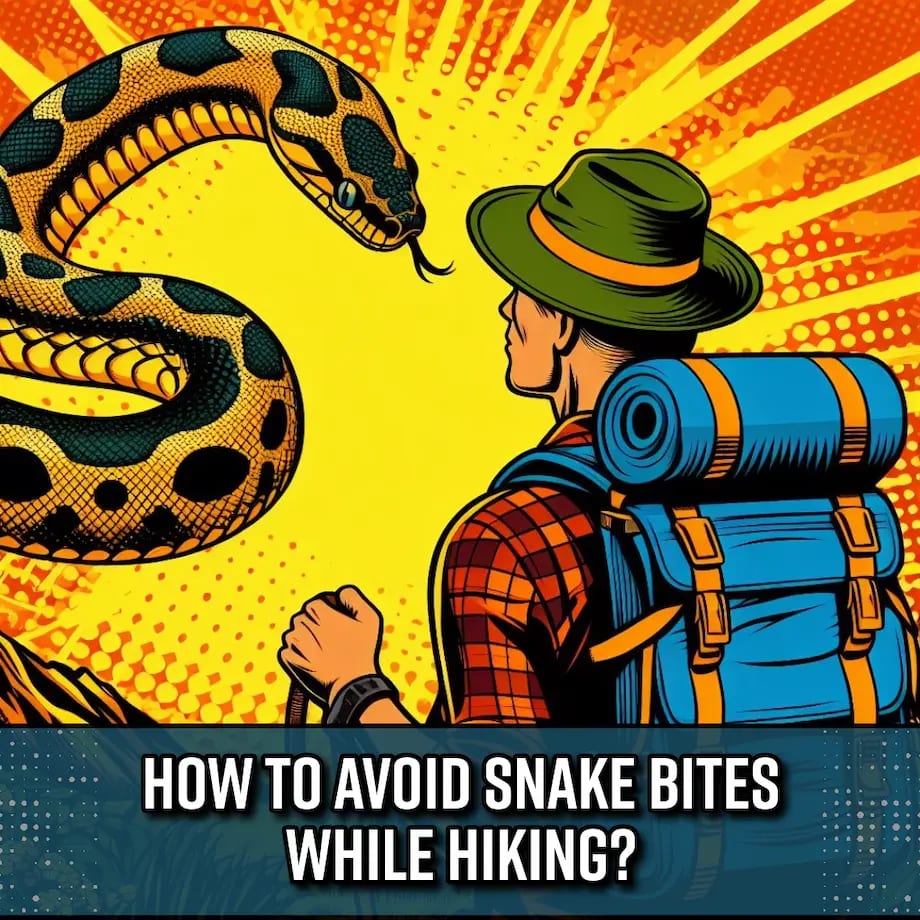
Hike the trails with confidence as our comprehensive guide provides essential tips and insights on understanding snake behavior, choosing appropriate footwear, and adopting cautious yet enjoyable hiking practices. Arm yourself with knowledge about venomous species, recognize warning signs, and master essential techniques to reduce the risk of snake encounters.
© 2025 Adventureite All Rights Reserved
Backpacking vs Hiking: What’s the Difference?

Backpacking vs hiking. At first glance they seem like the same thing, but there are a few key differences that completely change how you prepare for both.
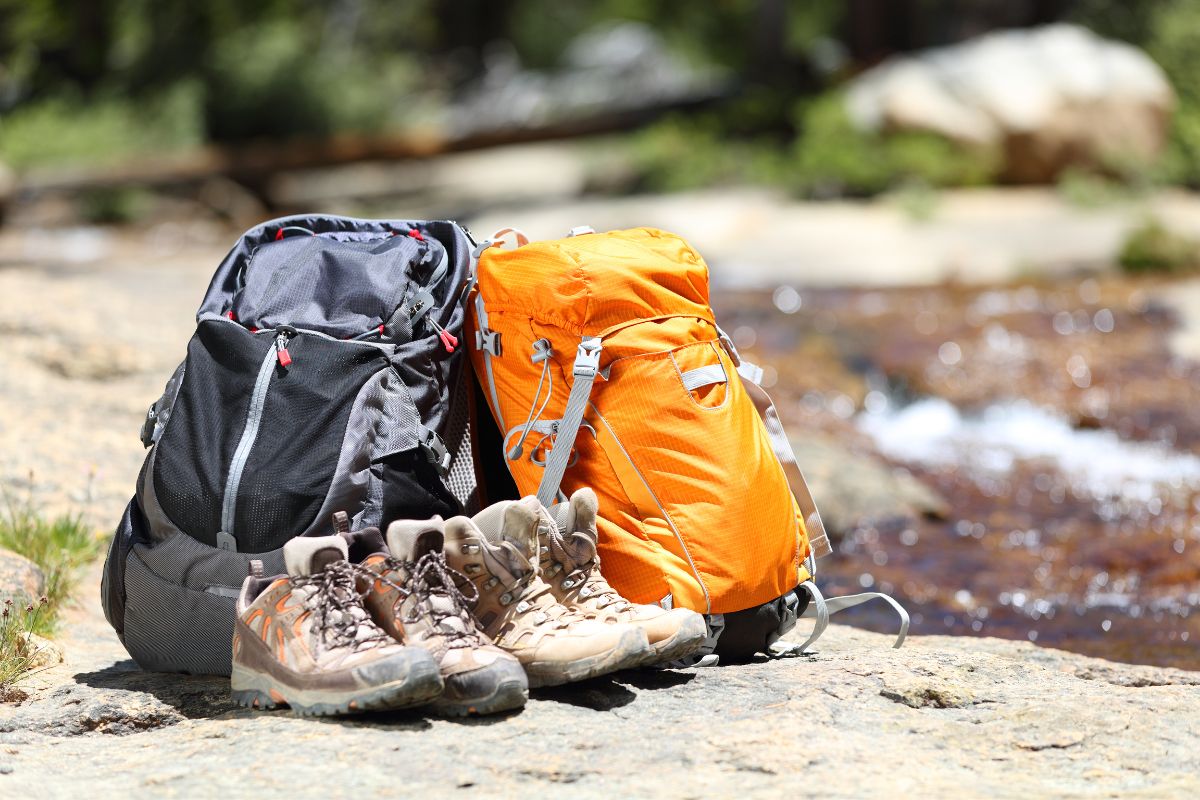
The Outdoor Authority may receive commissions for links included in articles to affiliate partners. Each of our recommendations is proudly backed by research and testing.
When I first started getting into outdoor adventuring, I wanted to research what gear I’d need.
About 10 minutes into my first Google search, I started to come across terms I wasn’t familiar with.
I mean, “backpacking,” sure, I know what that is.
Fill a backpack with some stuff and go for a hike.
But I quickly learned that “backpacking” and “hiking” are two different forms of outdoor traveling.
Moreover, there are a few different types of hiking, and everything seems to have different gear requirements.
All I wanted to do was enjoy nature!
If you’re stumbling through the terminology like I was, fret not.
This is The Outdoor Authority’s guide to Backpacking vs Hiking.
Table Of Contents
Thru-Hiking vs Section Hiking
First, I want to talk about hiking. And specifically, I want to divide “hiking” into three categories:
- Thru-hiking
- Section hiking
- Day hiking
You’ll see why in a second.
But first, a big difference between backpacking vs hiking, whether it’s thru-hiking, section hiking, or simple day hiking:
Hiking is characterized by minimalism.
Hikers generally don’t want to be lugging a ton of gear with them. Usually they’re trying to cover as much ground as possible as quickly as possible , so the further they’re going the less they want to carry.
At the bottom of this article you can find a backpacking vs hiking gear guide.
Thru-Hiking
Thru-hiking is completing a long hike hike over the course of 4+ months.
How long are we talking here? Take a look at the accompanying image.
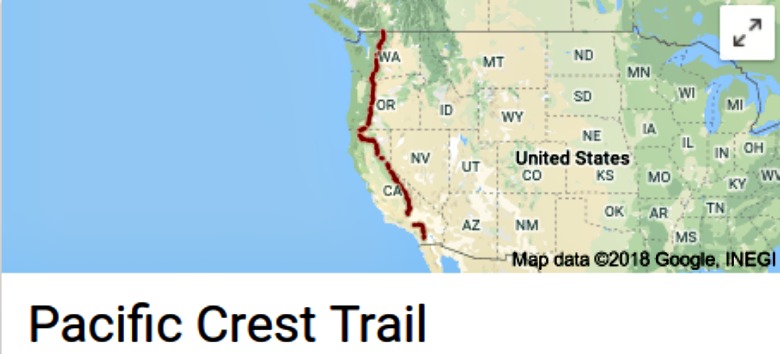
That map shows the length of the Pacific Crest Trail (PCT), which stretches from Canada to Mexico. It’s 2,650 miles long. If you plan to hike it in 5 months, you’ll need to average just over 17 miles per day.
That’s an intense hike.
I’ll be honest with you: I have never attempted a thru-hike.
But from those I’ve talked to and what I’ve read, thru-hiking is characterized how physically and mentally challenging it is. I think we call can agree that averaging 17 miles per day is tough enough, but I don’t think I can even comprehend the mental fortitude it must take.
Some stretches of thru-hikes are just boring and monotonous. The PCT has portions which are just long meanderings of nearly identical pine trees. These thru-hikers must feel like Bill Murray in Groundhog Day with how little progress it feels they’re making.
If you complete a thru-hike, that puts you in rare company. Consider these stats about the PCT (as of this writing):
- Only 5,368 people been recognized as have completed it since 1952.
- The most in one year is 720 in 2017.
- Only 87 people have done it more than once.
Of course, you can still hike long portions of beautiful trails like the PCT without doing the whole thing — particularly the boring parts.
That’s what section hiking is!
Section Hiking
Section hiking is the light version of thru-hiking.
- It doesn’t take nearly as long.
- You can pick and choose the sections you want to hike.
- You can better align your hike with the weather and bugs.
- You can enjoy the scenery more because you aren’t in as much of a rush.
The Pacific Crest Trail Association has guides on their website for some of the most popular PCT sections:
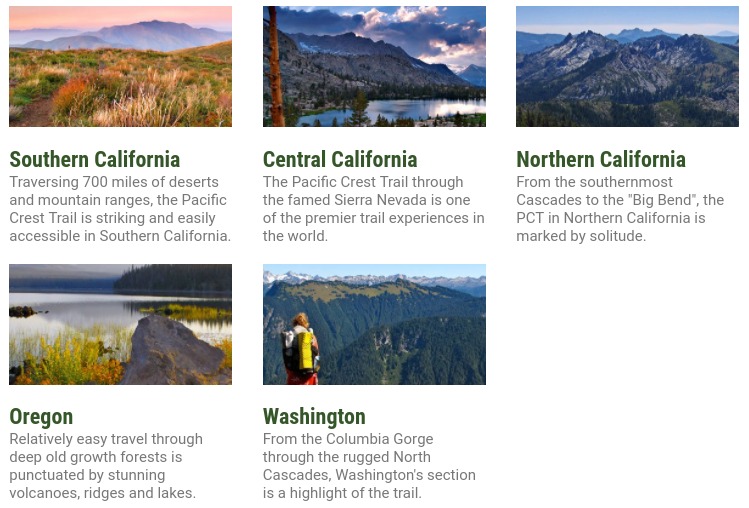
The Pacific Northwest is absolutely stunning. One time I stayed at a cabin high up in the Cascades and I promised myself I would come back and do some serious hiking in that region.
Sounds like an Oregon-Washington section hike is in my future!
Day Hiking
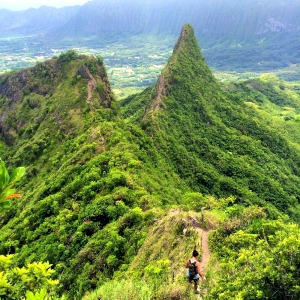
I’d be misleading you if I made all forms of hiking seem like long, arduous excursions.
Sometimes you just want to go day hiking!
Just like with thru-hiking and section hiking, day hiking is characterized by minimalism . You don’t need a tent, a sleeping bag, a knife, and a week’s supply of rations.
(OK, the knife may not hurt. You never know what trouble you could get into!)
Basically you’ll just have a light pack of some kind to carry your water. This packing list from Travel Eat Blog will get you started.
I go day hiking all the time. Wake up at 6:00 am on a Saturday, eat breakfast and shower, put on some light clothes, grab my backpack, toss some water in it, and head out for a leisurely 3-6 hour hike to a waterfall or mountain peak.
Day hiking is awesome.
Backpacking
Thru-hiking sounds pretty intense, doesn’t it? And maybe section hiking a few hundred miles is more than you’re willing to commit to. But you want to do more than just a simple day hike.
It sounds like you’re a prime candidate for backpacking!
Backpacking is a much slower form of travel than either thru-hiking or section hiking and doesn’t require you to pack uber-light. It still requires overnight survival but instead of being gone for months, many people are gone for a weekend or a week
Backpacking allows you to get the immersive nature experience you want without being forced to survive off the bare essentials. For example, consider these gear differences for backpacking vs hiking:
- Sturdier tent
- Heavier sleeping bag and more physical comforts
- Possibly additional clothing, such as robust hiking gloves
- Entertainment equipment, such as a stereo
- More kitchen or cooking supplies
Backpacking can also be a great compromise between avid adventurers and those just starting out. I’m ready to go on a section hike for several weeks, but I doubt my best friends are. A backpacking trip over a long weekend is a great way for us to share an awesome experience that’s entertaining for everyone without being overwhelming .
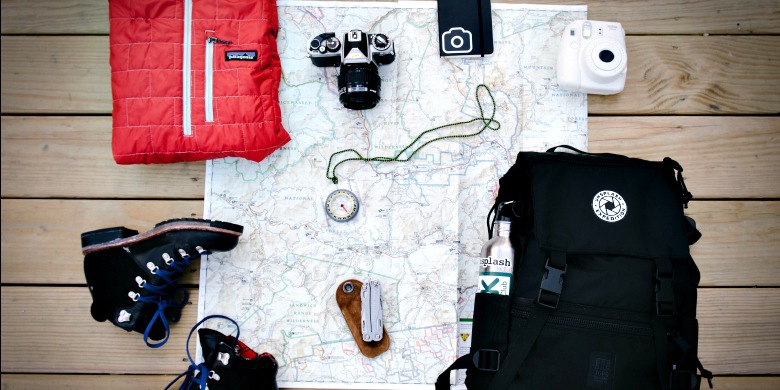
Backpacking vs Hiking Gear Needs
In this article we’ve defined 4 different types of nature travel:
- Thru-Hiking
- Section Hiking
- Day Hiking
- Backpacking
Each varies in its goals and levels of intensity , so it makes sense they’d have varying gear needs as well.
However, thru-hiking and section hiking require the same gear (for all intents and purposes) so I’ll combine them here as “Hiking” gear.
As mentioned above, a good rule of thumb when hiking is that longer distances require less gear , so be as minimalist as possible.
Let’s look at what you should consider packing when backpacking vs hiking.
Tent
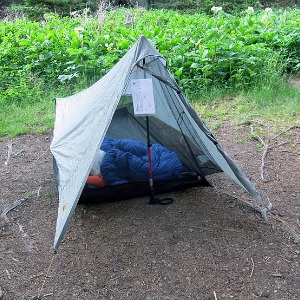
Hiking // Your goal is to maximize protection from wind and rain while minimizing weight, which generally that means a 1 person tent. However, the specific tent you go with depends on your top priority: size, weight, durability, or comfort.
Backpacking // Because backpacking generally takes only a few days versus a few months, you don’t need to be as concerned about weight and minimalism. Comfort and convenience carry more weight, pun 100% intended.
Pack
Hiking // Durable and lightweight, generally at least 40L volume but probably not more than 60L.
Backpacking // Generally you’ll have more stuff to carry, thus you’ll want a pack that has more volume. Frequently you’ll see bags over 60L
Sleeping Bag
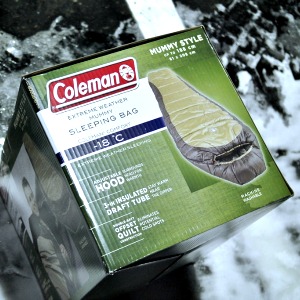
Hiking // As light as possible but able to withstand cold (15-20 degree rated) and wet conditions. A water-resistant down mummy bag is great if you have a waterproof tent. Otherwise, get a synthetic sleeping bag if you expect it to get wet. Aim for 3 lbs or less. Many hikers try to get closer to 2 lbs.
Backpacking // You don’t need to prepare for the worst because the weather forecast for your weekend hike should be somewhat accurate. Decide what temperature rating you’ll need and consider how comfortable you want to be. Mummy bags, which I recommended for hiking, often are less comfortable due to how restrictive they are.
Sleeping Pad
Hiking // Not a necessity, per se, but you should consider a light sleeping pad (under 1 lb). The ground will really wear you down in short order and a sleeping pad can help keep you warm. As is usually the case, there’s a trade-off between weight, comfort, and insulation. The R value will tell you how much insulation a sleeping pad provides where higher is better. Anything over 4 will be sufficient for three-season hiking.
Backpacking // Like with hiking, a sleeping pad isn’t a backpacking necessity, but I wouldn’t go backpacking without one. Remember, you can afford to carry more weight. Consider the conditions you’ll be sleeping in before springing for a sleeping pad with more weight and a higher R value.
Footwear
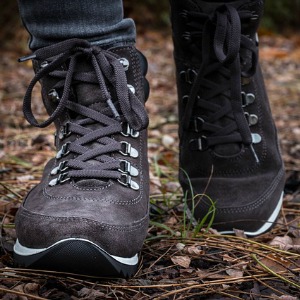
Hiking // Either a boot or trail shoe. Boots will provide durability and stability at the cost of weight. Trail shoes offer more comfort, are lighter, and dry more quickly, but they don’t provide as much ankle support and lack heft. Make sure you get something at least one size larger than normal. Your feet will take a pounding. They’ll swell. You’ll need that extra space.
Backpacking // I’d recommend a boot over a trail shoe. Because backpacking usually results in lugging more gear and more weight at a slower pace, the durability and support of a good hiking boot can’t be overvalued.
Clothing
Hiking // Minimal and no duplicates except maybe 2 pairs of underwear and socks. Never wear cotton, as cotton is terrible when it gets wet and it really starts to smell much more quickly. Many thru-hikers and section hikers make the mistake of bringing more clothing than they absolutely need, so do your best to be judicious.
Backpacking // I’d try to apply the same minimalist logic to clothing here as I would with hiking and pack clothes that are usually the same. I mean, if we’re talking about one long sleeve shirt for a 5 month hike, you can’t do it for a 3 day backpacking trip?
Water
Hiking // Water is your top priority. You’d better have a way to transport it and to clean water you find to make it potable. You do not want to mess around with bacterial infections from dirty water. A light, durable water bottle and some form of water purification, either tablets or a device, such as the LifeStraw, are necessary.
Backpacking // Depending on the length of your backpacking trip, you may be able to get away with bringing all of the drinking water you need versus collecting and purifying from the environment. Still, you never know what could happen so I’d recommend some form of water purification.
Guide Book
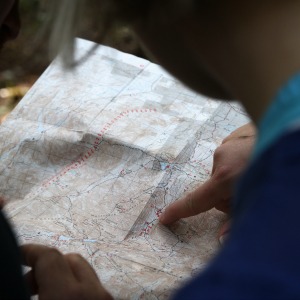
Hiking // Get one for whatever trail you’ll be doing so you know sites and (more importantly) where to re-supply.
Backpacking // I still bring a guidebook but more so to maximize my entertainment rather than for survival purposes.
Cooking Gear
Hiking // You can’t really afford to bring much of this stuff on a long hiking trip. Many, though not all, hikers elect to bring a small stove.
Backpacking // Maybe I’m in the minority here, but I don’t bring a stove when backpacking. For me, I can start a fire for a few nights and cook the way our ancestors did. That said, you can definitely afford to bring a good stove and maybe a few other kitchen “luxuries.”
Knife

Hiking // One of the most important pieces of equipment is your blade. However, remember the constant trade-off between utility and weight. It might be awesome to have a do-it-all multi-tool, but do you really want to carry around the extra heft for several months? It may seem like I’m nitpicking here, but if you take this conservative approach with all of your gear and shave off a few ounces here and there, that could add up to several pounds you aren’t lugging up a wet mountainside after 400 miles of hiking.
Backpacking // A must-have item, and you don’t need to skimp on it like I think you should when hiking.
Headlamp
Hiking // An absolute necessity. I’d say about 40 lumens should do.
Backpacking // Your cell phone light may do for such a short trip, but I’d still recommend a headlamp.
Electronics

Hiking // Your smartphone is a necessity, and it’s actually one of the most valuable pieces of gear you have. It’s your lifeline should something happen (and you’re in service range) and doubles as an on-demand flashlight, music player, and entertainment device. I’d also suggest a good solar powered charger. A great one can weigh well under a pound and provide you with power as you need it, which could be frequently.
Backpacking // Ditto everything I said above about your smartphone, and you can feel free to bring a few other electronics for your trip. For example, how about a really nice camera? Or what about a small Bluetooth speaker if you’re backpacking with friends? I’d also recommend some form of portable power, but the type of device depends on the length of your trip. If you only expect to need a few re-charges, a portable power pack that you pre-charge at home may be perfect. They come in a variety of capacities but the good ones can give you over a half-dozen recharges. If you’re going on a longer trip — maybe a full week? — look for a good solar charger. One final luxury item you could consider is a portable fan that hangs around your neck to keep you refreshed and cool as you walk.
Dog Stuff?
Some people love backpacking with their dogs. If you fall into that category, check out our Complete Guide to Backpacking With Dogs for suggestions on gear to bring and some other helpful information.
What Gear Do You Bring?
Backpacking vs hiking — which do you prefer? Have you successfully completed a thru-hike or section hike? Are you an avid backpacker? If so, tell us about your adventure!
https://adventureite.com/hiking/hiking-vs-backpacking/https://theoutdoorauthority.com/backpacking-vs-hiking/
